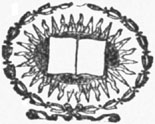Transcriber's Note:
Inconsistent hyphenation in the original document has been preserved.
Obvious typographical errors have been corrected.For a complete list, please see the end of this document.
Click on the images to see a larger version.
A WOMAN'S WARTIME JOURNAL
A WOMAN'S WARTIME
JOURNAL
AN ACCOUNT OF THE PASSAGE OVER A GEORGIA
PLANTATION OF SHERMAN'S ARMY ON THE
MARCH TO THE SEA, AS RECORDED
IN THE DIARY OF
DOLLY SUMNER LUNT
(Mrs. Thomas Burge)
With an Introduction and Notes by
JULIAN STREET

NEW YORK
THE CENTURY CO.
1918
Copyright, 1918, by
The Century Co.
INTRODUCTION
Though Southern rural life has necessarily changed since the CivilWar, I doubt that there is in the entire South a place where it haschanged less than on the Burge Plantation, near Covington, Georgia.And I do not know in the whole country a place that I should rathersee again in springtime—the Georgia springtime, when the air is likea tonic vapor distilled from the earth, from pine trees, tulip trees,balm-of-Gilead trees (or "bam" trees, as the negroes call them),blossoming Judas trees, Georgia crab-apple, dogwood pink and white,peach blossom, wistaria, sweet-shrub, dog violets, pansy violets,[vi]Cherokee roses, wild honeysuckle, azalia, and the evanescent green ofnew treetops, all carried in solution in the sunlight.
It is indicative of the fidelity of the plantation to its oldtraditions that though more than threescore springs have come and gonesince Sherman and his army crossed the red cottonfields surroundingthe plantation house, and though the Burge family name died out, manyyears ago, with Mrs. Thomas Burge, a portion of whose wartime journalmakes up the body of this book, the place continues to be known by hername and her husband's, as it was when they resided there before theCivil War. Some of the negroes mentioned in the journal still live incabins on the plantation, and almost all the younger generation are[vii]the children or grandchildren of Mrs. Burge's former slaves.
Mrs. Burge (Dolly Sumner Lunt) was born September 29, 1817, inBowdoinham, Maine. That she was brought up in New England, in theheart of the abolitionist movement, and that she was a relative ofCharles Sumner, consistent foe of the South, lends peculiar interestto the sentiments on slavery expressed in her journal. As a youngwoman she moved from Maine to Georgia, where her married sis
